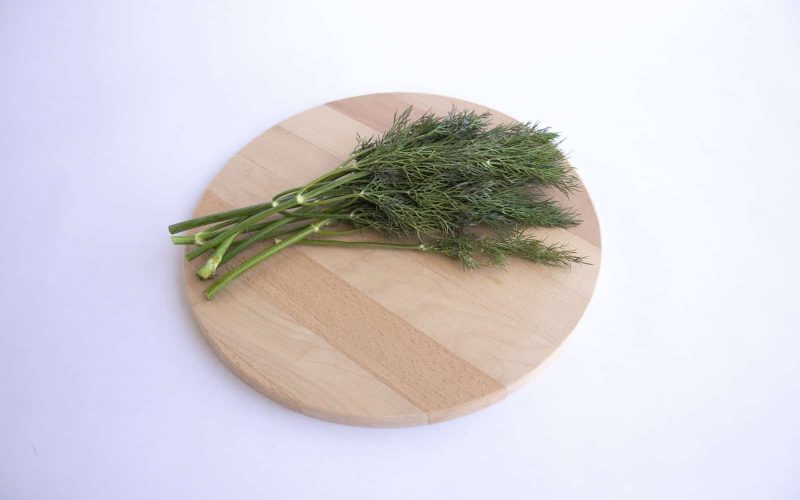Dill, also known as Anethum graveolens, has a unique flavor and scent that gives most dishes a distinctive flavor.
If you are preparing a dish that calls for dill and this item runs out, you may use a few substitutes for dill weed.
Dill is a common herb in Mediterranean cooking and a crucial component of pickles. Although it is not a pantry necessity, it can still be found in many of our favorite dishes and condiments, like potato salad, ranch dressing, pita sandwiches, and more.
The dill plant, which belongs to the same family as cilantro, cumin, and caraway, benefits from its leaves (fronds) and seeds.
Its fronds are bright green, herby, and highly fragrant. Their flavor is comparable to grass, with hints of anise and citrus. The seeds also have a somewhat bitter edge.
The dill plant’s seeds and leaves are common meal herbs or spices. They contain few calories but are abundant in vitamin A and manganese.
This fresh herb’s leaves are also called “dill herb.” Such leaves provide soups, meals, and stews a wonderful taste.
While having dill on hand benefits some recipes, you might not always do so. Here are a few quick methods and substitutes for dill weed if you’re in a bind if your local grocery store is out of stock:
1. Rosemary
It is the following choice after dill weed. Traditional poultry, fish, and hog dishes benefit greatly from the intense scent of rosemary.
When creating vegetarian foods, rosemary may give potatoes, onions, mushrooms, spinach, and peas an exquisite flavor. Dill and rosemary both go well with salads.
This herb can also be used for another novel idea. After putting the leaves in the refrigerator, you may peel them off and utilize them in various dishes.
The stems of this herb are highly beneficial and may be used as grilled skewers. This is unquestionably a unique technique to emphasize the unusual flavor of rosemary.
2. Tarragon
Tarragon works best for simulating the flavor of dill without actually using dill. This is because tarragon’s flavor and scent also have an anise aspect.
The tarragon plant, also known as Artemisia dracunculus, belongs to the sunflower family. In American cuisine, we frequently substitute chives, rosemary, or parsley with tarragon, which is more common in European cuisine.
There are three varieties: Mexican, Russian, and French tarragon. The most popular kind, French tarragon, is what you will most likely purchase when you see it at the grocery store.
Like dill, tarragon has a strong flavor and should be used sparingly to avoid overpowering any meal. Contrary to dill, tarragon can withstand cooking heat, so you may include it early in preparing your meal.
Its ratio of fresh to dried ingredients is another resemblance to dill weed, making them excellent substitutes. If a recipe asks for fresh tarragon, but you only have dried, use one teaspoon instead of one tablespoon.
3. Fresh Parsley
The next on our list of substitutes for dill weed parsley. The herb parsley is fairly widely accessible. It pairs beautifully with any cuisine, thanks to its delicate taste.
If fresh parsley is not available, another option is dried parsley. Some finely chopped parsley can substitute for dill weed. Fresh parsley is preferred to garnish foods like eggs, fish, poultry, roast lamb, or grilled steaks.
On the other hand, dried parsley can be used instead of dill seeds. The advantage of utilizing these herbs in their dried form is that they can be added to food as it is cooking.
For a considerable time, these dried herbs maintain their flavor and enhance the taste of your meals.
4. Dried Or Fresh Dill
Even if you only have one, the other is preferable since it will taste and smell the closest to dill weed. However, if your recipe calls for dried dill, you may substitute fresh dill for dried dill or vice versa.
However, remember that dried dill has a slightly stronger flavor than fresh dill, so pay attention to the ratios. Therefore, use one teaspoon of dried dill for every tablespoon of fresh dill.
5. Thyme
With thyme, we step away from the licorice-tinged flavor of dill while retaining an herbal, grassy flavor that may readily enhance the flavor of meat, seafood, stews, salads, dressings, and sauces.
Thyme, or Thymus vulgaris as it is known technically, is a member of the mint family. However, any resemblance to mint is more of a clean flavor than anything you’d put in a mojito.
Thyme has woody, flowery undertones in addition to its herbal grassiness, and there is a lemon thyme type with a citrus flavor. Thyme may be purchased dried in the spice aisle and fresh in the vegetable section, similar to dill.
According to Thrive Cuisine, Fresh thyme has a cleaner flavor, which means more of that not-so-minty minty flavor. However, thyme differs from dill in that heat will enhance its aromas.
Thus, in contrast to dill, you may add it early in the cooking process. Additionally, thyme has a more “pungent” flavor than dill, so for optimal results, start with less and increase it as needed.
6. Chervil
Chervils are the next substitutes for dill weed. Like parsley, it is another herb from the parsley family that is accessible all year round. It is a staple herb in French cooking.
Chervil has a flavor similar to licorice and parsley. It is the primary herb in countless French and Italian dishes. It may be a nice substitute for dill when making soups and salads.
7. Oregano
Pizza, spaghetti, soups, and stews all benefit from oregano’s distinctive flavor. It can also be used as a substitute for dill weed in sauces and marinades for meat. Start with a small amount, then taste to see whether you want to add more.
8. Basil
Another herb that may be used as a substitute for dill weed in your kitchen cabinet is basil. It tastes really strong and has a pleasant scent.
Without basil, many Asian and Italian dishes would be lacking. Basil is a plant that is grown in various ways. It comes in various colors, from purple to green, and is sold at markets.
In addition, it is frequently used to create various kinds of pesto and sauces. It is also a great idea to use it in other dishes like salads, pickles, marinades, and spaghetti. Unlike herbs like fennel or parsley, it is not suggested to preserve it in the refrigerator.
9. Cilantro
Both cilantro and dill weed are members of the same family. Although cilantro has a more lemony, peppery, or soapy flavor, depending on your genetic makeup, it is handled and prepared similarly to dill because of its leafiness.
It successfully gives food a bright, fresh, herbal character. The herb cilantro refers to the leafy portion of the Coriandrum sativum coriander plant.
Coriander seeds are a spice with a nuttier finish and a hint of heat from the plant. While cilantro is well-known for complementing tacos, it is a multi-purpose herb that may also enhance sauces, salsas, meat, seafood, and vegetables.
Although cilantro is available dried in the spice section, the taste is noticeably diminished. For maximum flavor effect, fresh cilantro is best, and it’s quite simple to obtain in the vegetable area and at farmer’s markets.
Use about the same amount of cilantro as with dill, but feel free to taste to ensure it isn’t too strong.
10. Bay Leaves
Bay leaves work particularly well with slow-cooked soups, stews, and meat dishes. They enhance the flavor of your food and contribute minerals like iron, potassium, and vitamins A and C. Simply add a few leaves while your food cooks and remove them before serving.
11. Fennel
Like celery, fennel has a wide stalk and large leaves, but its flavor is sweeter. It has tougher stalks that are useless, unlike celery.
Its leaves and stems are tasty when cooked with certain vegetables or seafood or can be used as salad garnishes.
Fresh fennel purchased from the market may be wrapped and kept in the refrigerator for about five days. It adds a wonderful flavor to your favorite stews and soups and is a near substitute for dill weed.
12. Mint
Mint has a distinctive taste that is both bright and vegetal. It is frequently used in Middle Eastern and Mediterranean cuisine. Mint combines well with lemon-based dishes and may be used as a substitute for dill weed in salads and yogurt-based dips. Start with a small amount and increase it as desired.








